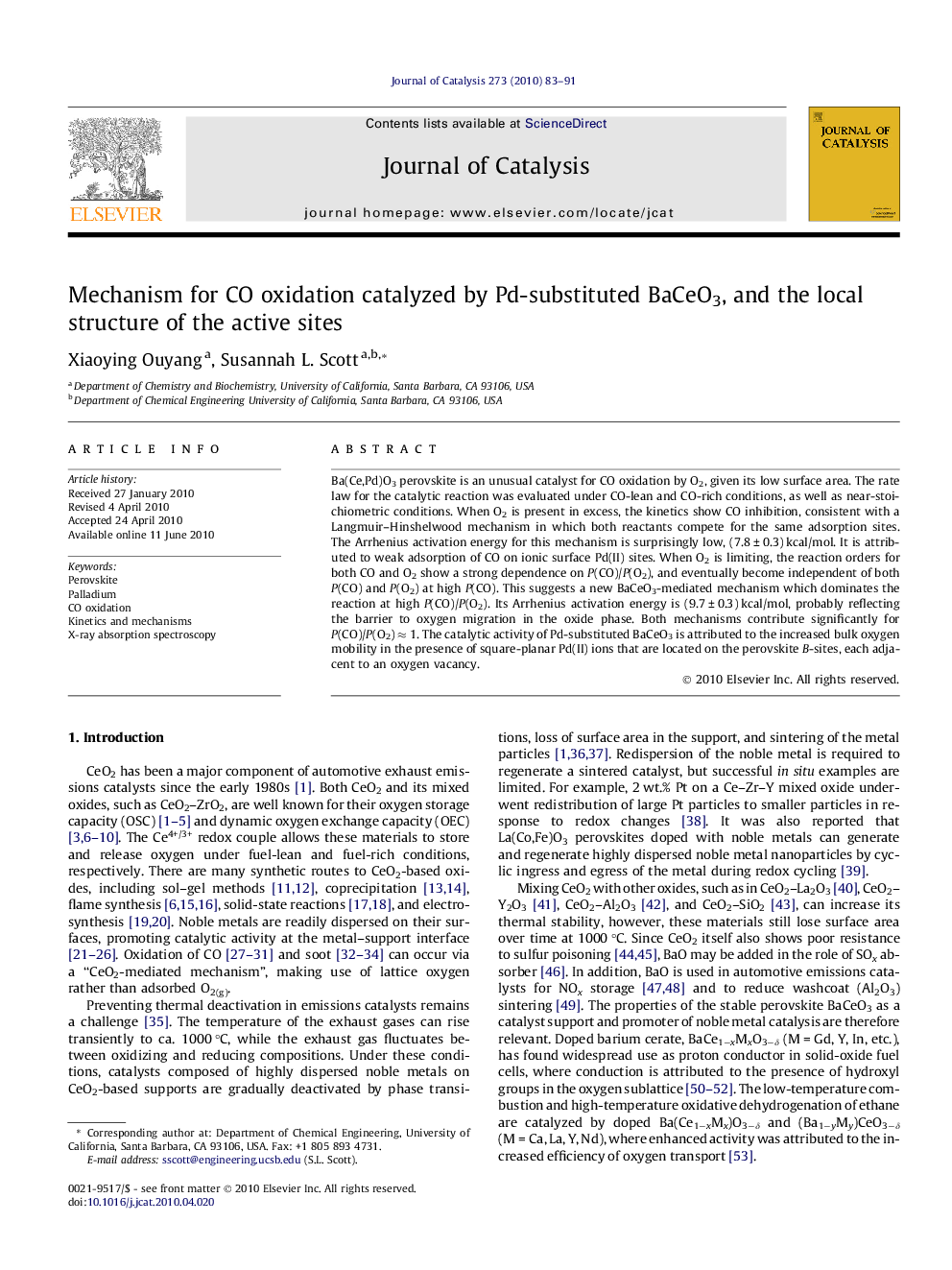| Article ID | Journal | Published Year | Pages | File Type |
|---|---|---|---|---|
| 62072 | Journal of Catalysis | 2010 | 9 Pages |
Ba(Ce,Pd)O3 perovskite is an unusual catalyst for CO oxidation by O2, given its low surface area. The rate law for the catalytic reaction was evaluated under CO-lean and CO-rich conditions, as well as near-stoichiometric conditions. When O2 is present in excess, the kinetics show CO inhibition, consistent with a Langmuir–Hinshelwood mechanism in which both reactants compete for the same adsorption sites. The Arrhenius activation energy for this mechanism is surprisingly low, (7.8 ± 0.3) kcal/mol. It is attributed to weak adsorption of CO on ionic surface Pd(II) sites. When O2 is limiting, the reaction orders for both CO and O2 show a strong dependence on P(CO)/P(O2), and eventually become independent of both P(CO) and P(O2) at high P(CO). This suggests a new BaCeO3-mediated mechanism which dominates the reaction at high P(CO)/P(O2). Its Arrhenius activation energy is (9.7 ± 0.3) kcal/mol, probably reflecting the barrier to oxygen migration in the oxide phase. Both mechanisms contribute significantly for P(CO)/P(O2) ≈ 1. The catalytic activity of Pd-substituted BaCeO3 is attributed to the increased bulk oxygen mobility in the presence of square-planar Pd(II) ions that are located on the perovskite B-sites, each adjacent to an oxygen vacancy.
Graphical abstractLow surface area, crystalline Ba(Ce,Pd)O3 catalyzes CO oxidation using either oxygen adsorbed from the gas phase or labile lattice oxygen, and the rate law depends strongly on the P(CO)/P(O2) ratio. Catalytic activity is attributed to the presence of square-planar Pd(II) ions located on the perovskite B-sites, each adjacent to an oxygen vacancy.Figure optionsDownload full-size imageDownload high-quality image (159 K)Download as PowerPoint slide
